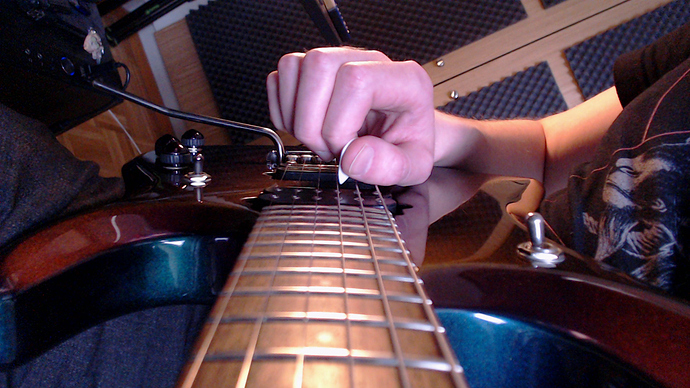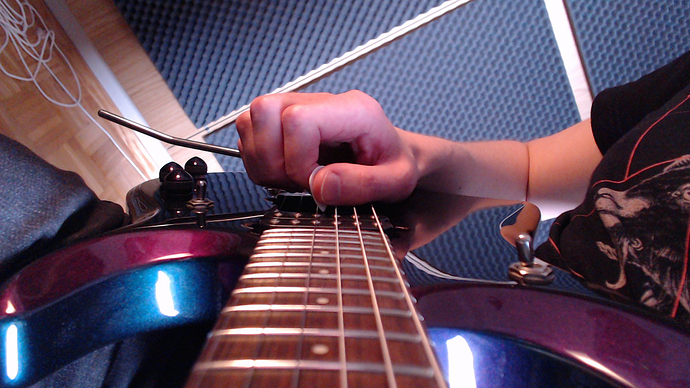Tap test with forearm/wrist, 230 BPM:
Forearm/wrist tremolo:
I tried this forearm/wrist motion just now. It felt okay and I think the tap test checks out. It’s easy to do 2-3 bars at 230, and I can do 240 for two bars, then it falls behind.
For the tremolo, I had to tool around with grips and forms for about half an hour to get to what you see on the video. I couldn’t go fast if I ditched the flexion and anchored the palm heels on the saddles, or tried the “semi-muted sound” like in the Primer chapter. The motion got clunky and slow, my thumb would accidentally mute the string I just played etc. I’ll shoot some clips of that later.
After filming I these videos, was able to do a couple of single-string chunking reps at 215, which felt pretty amazing to do! I’m gonna keep experimenting with this form. My main concern right now is the unmuted lower strings, but I’ll focus on getting the motion smoother first.
Next, pronated wrist DSX tremolo:
Same but a closer shot (sorry it’s a bit too dark):
I started trying out pronated wrist DSX a couple of weeks ago and noticed immediately that it’s much easier for me than, say, supinated wrist USX. In fact it feels almost effortless at 180-190 BPM. It lacks attack, but I’m trying different grips to help that.
I don’t think the motion is escaping correctly yet, at least not all the time. It turns into a trapped motion quite easily. But even when it does, the ease and reliability of starting and repeating this sort of motion is huge compared to wrist USX. With that motion, I feel like I almost don’t even know how to play upstrokes, and by looking at some old footage of my USX, I think I can see this DSX motion trying to push into existence.
What could I try to get this motion to escape? I’m pretty much maximum-pronated, but whenever I go fast, the motion flattens out. My suspicion is that the fast motion itself doesn’t want to move away from the guitar’s body even though my arm is tilted to facilitate the escapes. I tried exaggerating the escape trajectory for a second, but I seemed to lose the ease and smoothness and kinda discarded that idea.
I’ll try to get better close shots of the pronated DSX tomorrow. Thanks for any tips or ideas guys!










